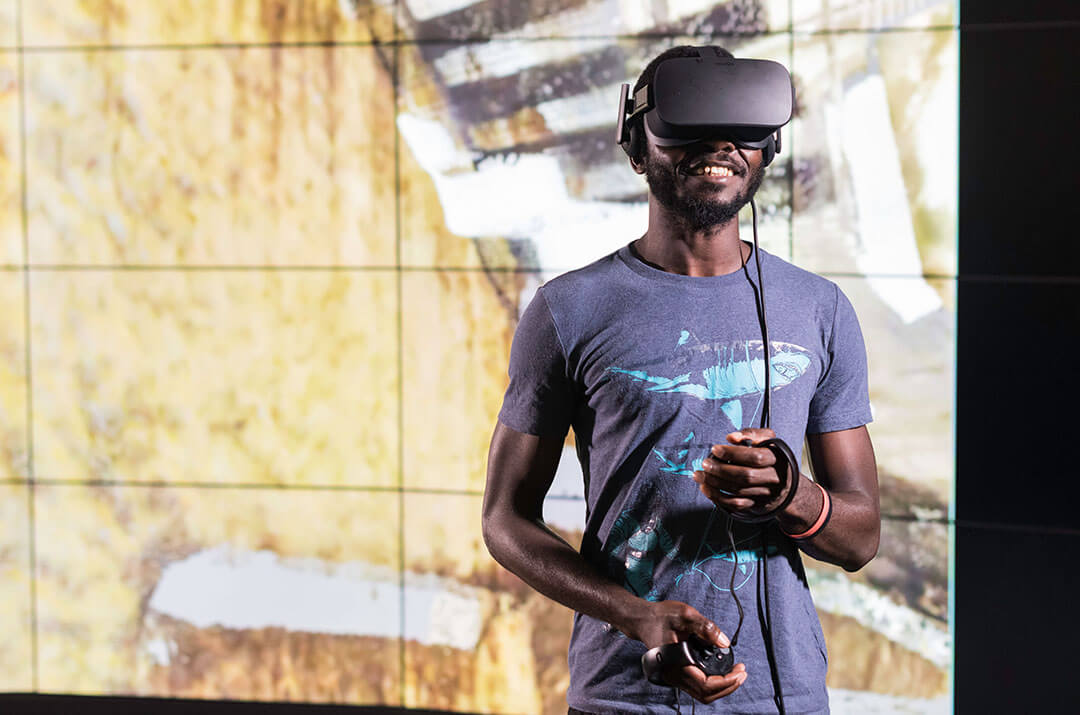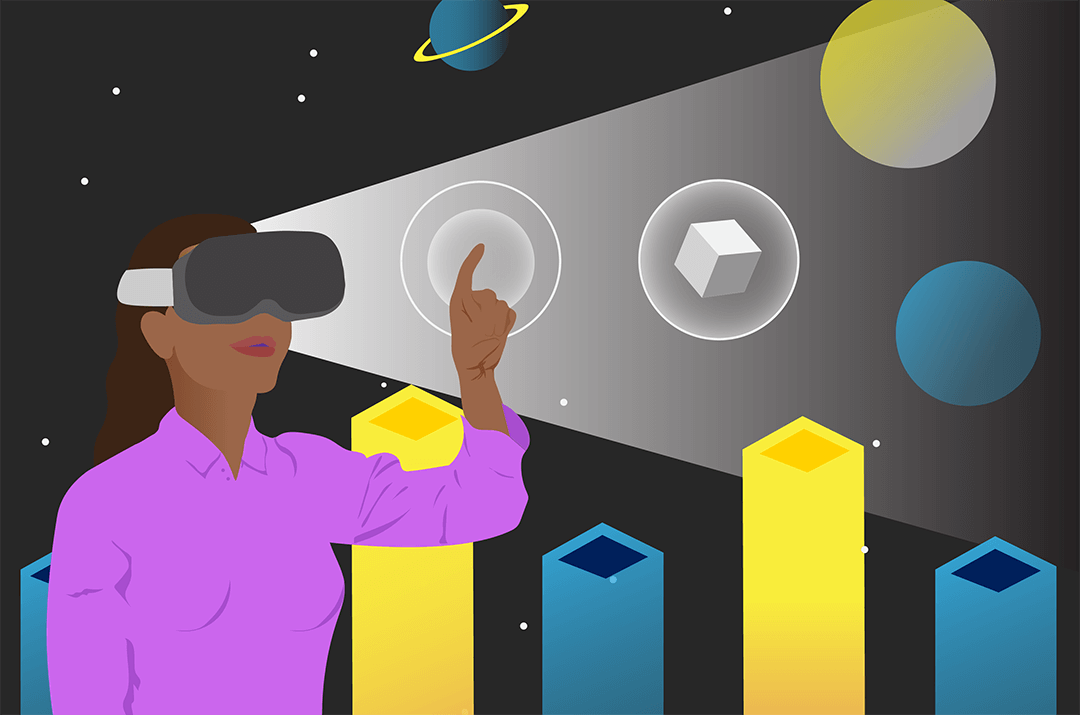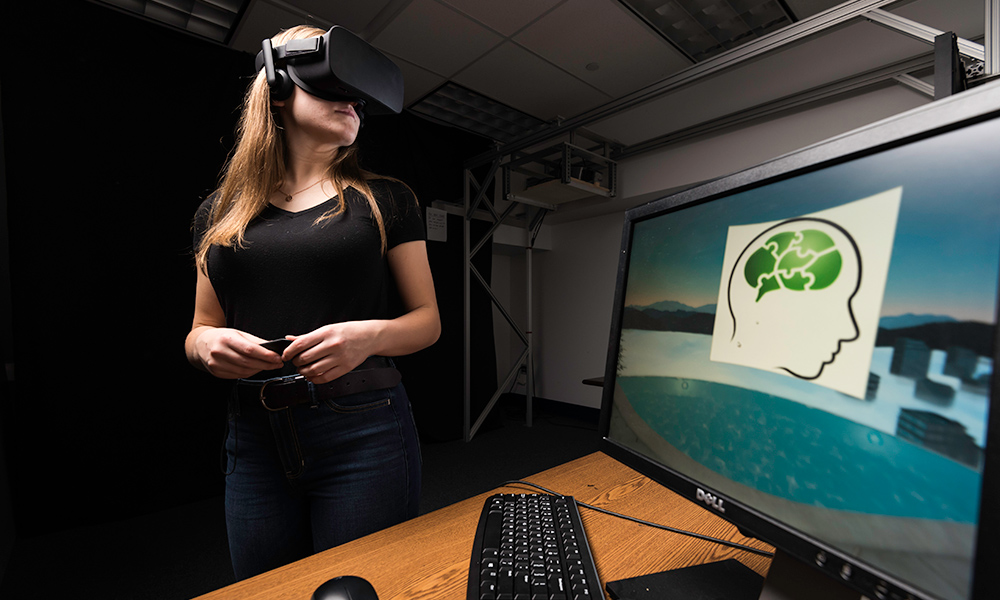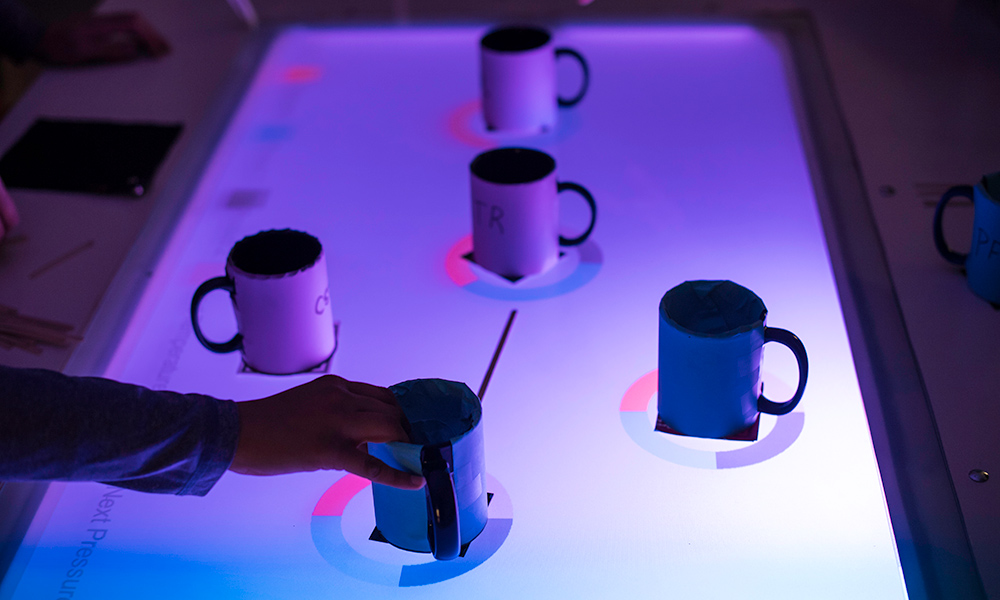Studio X
Studio X
Experience, Explore, and Experiment
Studio X will be where the latest related extended reality (XR) technologies— including virtual, augmented, and mixed realities—come to life. The new space will serve the entire University of Rochester community, too, and will foster exploration, cross-disciplinary collaboration, and peer-to-peer learning. Studio X will soon be located on the first floor of the Carlson Science and Engineering Library near the VISTA Collaboratory a high-tech data visualization area. Within the new space, students, faculty, and other users will be equipped with the latest XR technologies. They also will be guided by experts who will help them experiment and gain the skills to lead new, innovative approaches to research, teaching and scholarship.
To learn more about Studio X, contact:
Pamela Jackson, Senior Director of Advancement, River Campus Libraries
pamela.jackson@rochester.edu, (585) 276-5731
Derek Swanson, Director of Advancement, Hajim School of Engineering & Applied Sciences
derek.swanson@rochester.edu, (585) 273-1341
Join the Lam Library Challenge now.
University of Rochester trustee and honorary member of the University Libraries National Council, Evans Lam ’83, ’84S (MBA) recently established a $250,000 challenge gift program—the Lam Library Challenge—to support Studio X and honor Mary Ann Mavrinac, vice provost and Andrew H. and Janet Dayton Neilly Dean of the University of Rochester Libraries. Because of Lam’s leadership and generosity, the new space will be named the Mary Ann Mavrinac Studio X. Join Lam now and honor Dean Mavrinac—who will retire in the fall of 2021 after 10 years of service to the University’s River Campus Libraries—while supporting leading-edge innovation and learning at the University.
What is XR?

XR is an umbrella term encompassing virtual (VR), augmented (AR) and mixed realities (MR).
What is VR?

Virtual reality (VR) uses advanced display and immersive audio technologies to create an interactive, three-dimensional environment using a headset. Think of walking through the great pyramids of Egypt from the comfort of your living room.
What is AR?

Augmented reality uses digital technology to overlay video and audio onto the physical world to provide information and embellish our experiences. Think of using AR to help you assemble a piece of furniture. Or use it to see if a table would fit in your dining room.
What is XR?

XR is an umbrella term encompassing virtual (VR), augmented (AR) and mixed realities (MR).
What is VR?

Virtual reality (VR) uses advanced display and immersive audio technologies to create an interactive, three-dimensional environment using a headset. Think of walking through the great pyramids of Egypt from the comfort of your living room.
What is AR?

Augmented reality uses digital technology to overlay video and audio onto the physical world to provide information and embellish our experiences. Think of using AR to help you assemble a piece of furniture. Or use it to see if a table would fit in your dining room.
Imagine this
Studio X will facilitate new learning opportunities. For example:
- Art history students can walk through an art exhibit in Paris and virtually hold and examine works of art.
- Engineering students can design and build digital structures and actually walk through them, using staircases and sitting on furniture.
- Anthropology students can visit ancient cities to understand life in the time and place they are studying.

 Studio X will provide faculty and students like me an ideal opportunity to explore, learn, and develop XR. Studio X’s staff will help us, too, by providing the support, expertise, and a variety of events that will equip us with critical knowledge and further position the University of Rochester as a leader in XR.
Studio X will provide faculty and students like me an ideal opportunity to explore, learn, and develop XR. Studio X’s staff will help us, too, by providing the support, expertise, and a variety of events that will equip us with critical knowledge and further position the University of Rochester as a leader in XR.
–Muhammed El-Sayed ‘22, A Karp Library Fellow and a computer engineering major and history minor
Stories
Training brains—young and old, sick and healthy—with virtual reality
Duje Tadin, associate professor of brain and cognitive sciences; Jeffrey Bazarian, professor of emergency medicine; and Feng (Vankee) Lin, assistant professor in the School of Nursing, are working together to see how VR can help treat people with Alzheimer’s disease and those suffering from concussions. Through access to technology and training, Studio X will prepare students to collaborate on and conduct cutting edge research.
What We Can Do Together
Together we can change the way we teach, learn, and conduct research. Join us now and help facilitate access to expertise and technology, robust programming and curricular integration, and high-impact student engagement and research.
For More Information
Do you have a question about XR or Student X? Have you ever experienced XR? Tell us about it here. One of our Studio X-perts will get back to you.
April 2021


